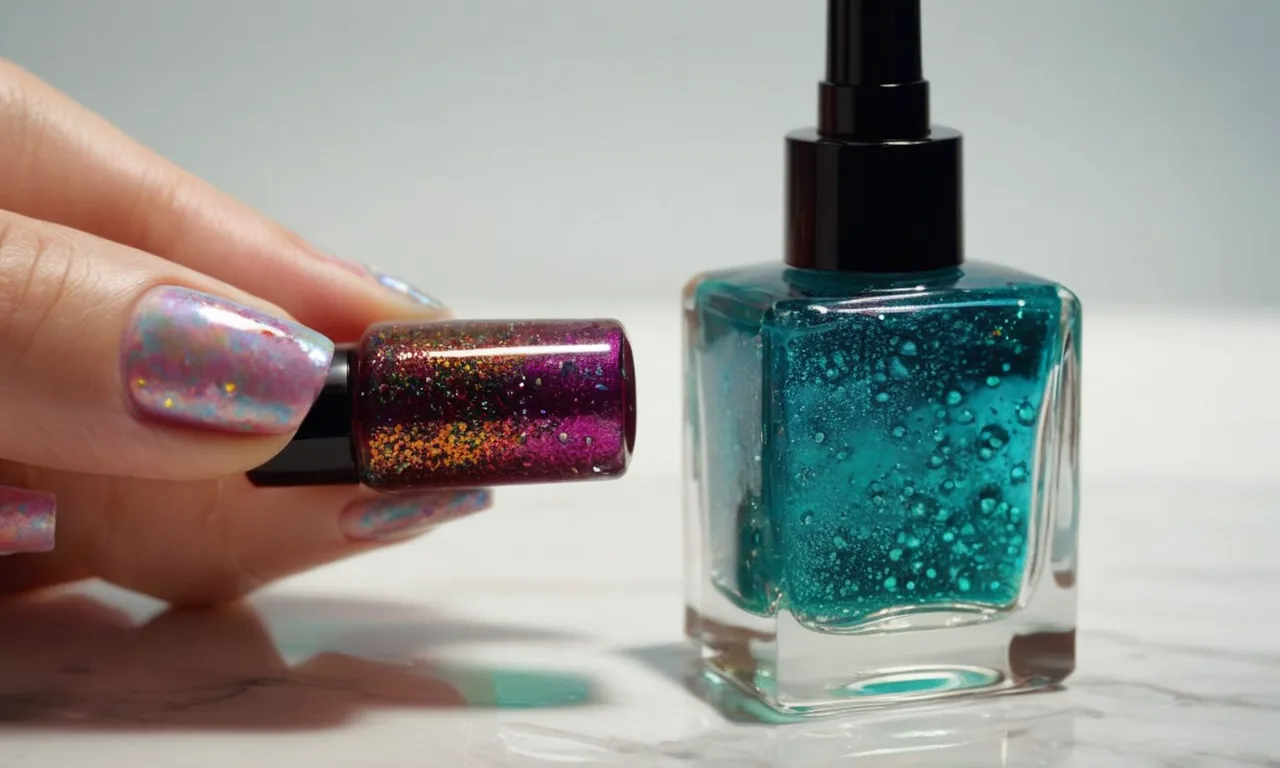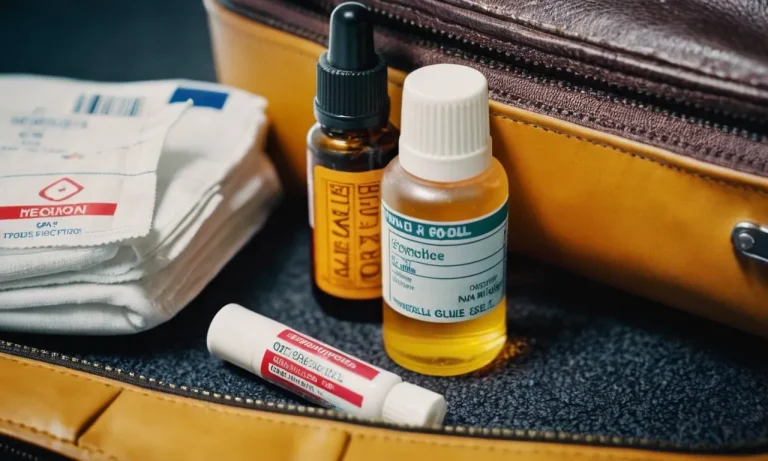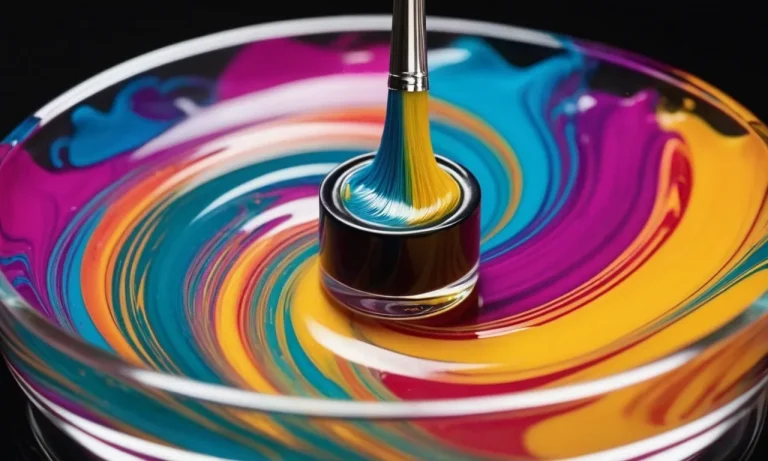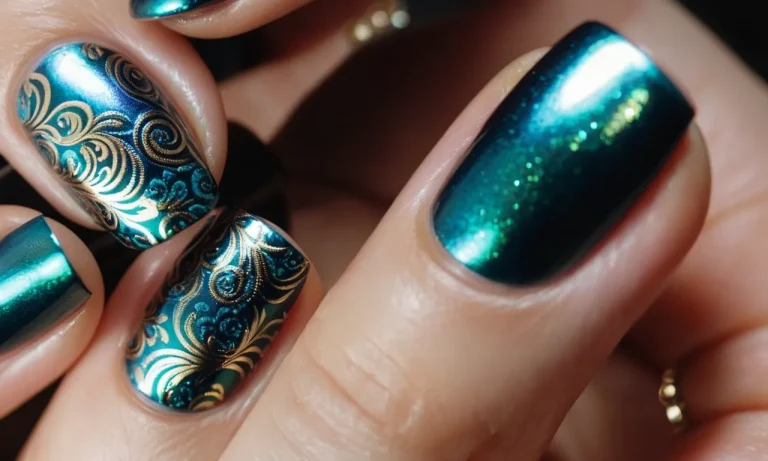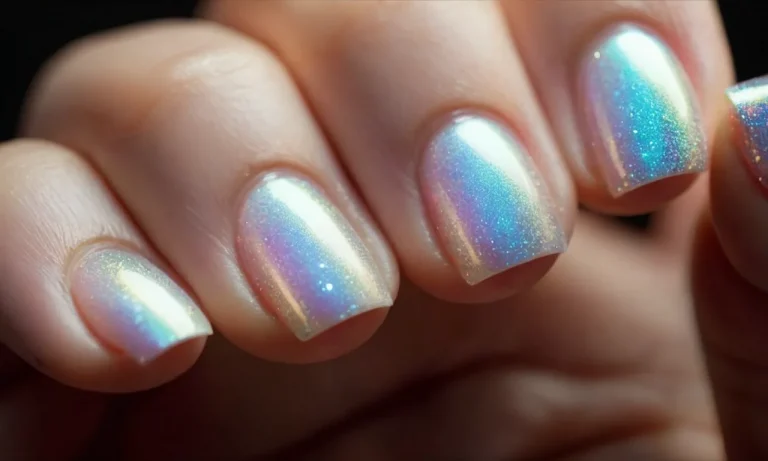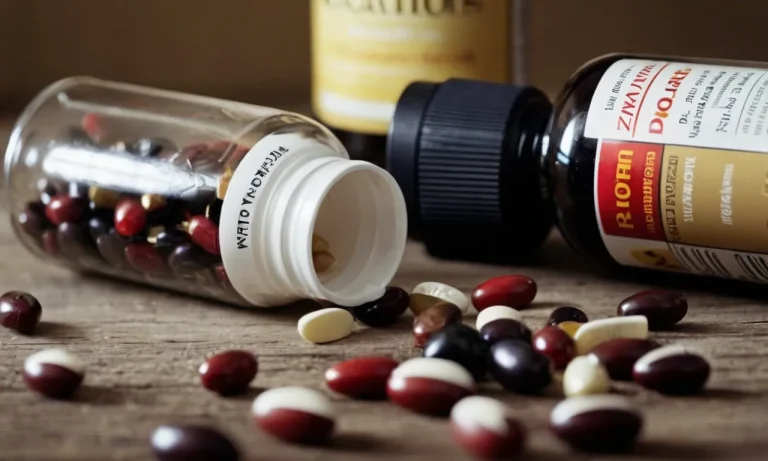How To Get Nail Polish Off Glass: A Comprehensive Guide
Have you ever spilled nail polish on a glass surface and struggled to remove it completely? Getting nail polish off glass can be tricky, but not impossible. In this comprehensive guide, we’ll walk you through several easy methods to help you erase any polish stains from glass.
If you’re short on time, here’s a quick answer to your question: use nail polish remover, rubbing alcohol, or blow dryer heat to dissolve the polish so you can wipe it away.
What You’ll Need
Nail polish remover
Nail polish remover, also known as acetone, is the most effective product for removing dried nail polish from glass surfaces. Look for 100% pure acetone without added fragrances or colors. Acetone is an aggressive solvent that can quickly break down nail polish that has adhered to the glass.
Rubbing alcohol
Rubbing alcohol, or isopropyl alcohol, can also help dissolve and remove unwanted nail polish from glass. It may take a bit more elbow grease than acetone, but rubbing alcohol is a safer option if you’re concerned about damage to the glass surface.
Pour some on a cotton pad and rub the stained area until the polish comes up.
Cotton balls or pads
You’ll need something absorbent like cotton balls or pads to apply nail polish remover or rubbing alcohol to the stained glass surface. Cotton allows you to precisely target the stained spots without creating a bigger mess. Pull the stained polish up by pressing and rubbing the cotton on the area.
Scraping tool (old credit card, blade etc.)
For nail polish that has really caked onto the glass, a scraping tool can help remove the bulk of it so chemicals like acetone can dissolve the rest. An old credit card, single-edge razor blade, or metal spatula are effective options.
Gently scrape the area using short, light strokes going in one direction to avoid scratching the glass.
Blow dryer
Using heat from a blow dryer is a good first step to try and loosen up thick, stubborn nail polish on glass. Hold the dryer a few inches from the glass and wave it over the stain for 30-60 seconds. The warmth will soften the polish so it can be peeled and wiped away more easily.
Be very careful not to hold the heat in one spot too long, as drastic temperature changes can cause glass to crack.
Method 1: Nail Polish Remover
Apply a generous amount of nail polish remover to a cotton ball
The first step is to pour a liberal amount of nail polish remover onto a cotton ball or pad. Acetone-based removers work best for removing dried polish from glass. Make sure the cotton is fully saturated so you have plenty of remover to tackle the stain.
Gently rub the stained area, adding more remover as needed
Start rubbing the cotton ball gently over the stained area of glass. Apply light pressure and rub in a circular motion. The acetone will start breaking down the polish. Keep rubbing until you see it dissolving before your eyes.
If the cotton starts to dry out, simply add a few more drops of remover. Re-wetting often is key to lifting off stubborn dried polish.
Continue rubbing until the polish is dissolved
Be patient and keep rubbing with remover until all traces of the nail polish are gone. This can take some elbow grease for really stubborn stains. The more vigorous you rub, the faster the polish will dissolve.
Check the area periodically to see if the stain has lifted. If you still see residue, continue applying remover and rubbing.
Wipe away the dissolved polish with a clean cotton ball
Once the nail polish has fully dissolved, take a fresh cotton ball and wipe the area clean. This will remove the dissolved polish residue and excess remover.
Make sure to use a clean section each time so you don’t redeposit the polish you just removed.
Repeat as needed for stubborn stains
If you still see a faint stain, repeat the process. Apply more remover, rub with a fresh cotton ball, and wipe clean. Multiple applications may be needed for polish that has really dried on.
You can also try soaking a cotton ball in remover and holding it on the stain for 1-2 minutes to let the acetone penetrate before scrubbing again.
Rinse the area with water and dry completely
Once all signs of polish are gone, wash the area with warm water and dish soap. This removes any lingering remover residue.
Make sure to dry the glass thoroughly with a lint-free cloth to prevent new water spots.
Method 2: Rubbing Alcohol
Rubbing alcohol is another highly effective method for removing stubborn nail polish from glass surfaces. The alcohol helps to quickly break down and dissolve the nail polish so it can be easily wiped away.
Pour some rubbing alcohol onto a cotton ball
Start by pouring a liberal amount of 99% isopropyl rubbing alcohol onto a clean cotton ball or pad until it is fully saturated. You want plenty of alcohol to dissolve the polish.
Rub the alcohol on the stained glass surface
Next, use the cotton ball to rub the alcohol directly onto the nail polish stain on the glass. Apply a good amount of pressure as you rub to help break up the polish. Focus on stained areas and keep rubbing until you notice the stain begin to break down.
Let it sit for a few minutes to break down the polish
After you’ve rubbed the nail polish stain thoroughly with alcohol, let it sit for 2-3 minutes. This gives the alcohol time to fully penetrate and dissolve the remaining traces of polish on the glass.
Wipe away with a clean cotton ball
Once the alcohol has sat for few minutes, use a clean cotton ball or pad to wipe away the dissolving polish residue. You may need to apply some elbow grease to remove stubborn stains. Just keep wiping until all traces are gone.
Repeat as needed until stain is removed
If any faint stain remains after wiping, repeat the alcohol application and wiping steps above. The key is to let the alcohol sit and penetrate before trying to wipe. According to cleaning experts, it typically takes 2-5 applications to fully remove nail polish from glass using this rubbing alcohol method.
Rinse and dry the glass when finished
When you are satisfied the stain is completely gone, give the glass a final rinse with clean water and dry thoroughly with a lint-free cloth or paper towels. Check closely to ensure no polish residue remains before putting the glassware back into use.
Rubbing alcohol is inexpensive, fast acting, and easy to use for erasing ugly nail polish stains from drinking glasses, vases, mirrors, tabletops, or any glass surface. Just remember to rinse treated surfaces well before reuse, and keep alcohol out of reach of children.
With some perseverant scrubbing and dissolving, you can get your glass to sparkling new again.
Method 3: Blow Dryer Heat
Using a blow dryer is an effective hands-off approach to removing dried nail polish from glass. The focused heat from the blow dryer can soften even old, stubborn polish so it wipes away with ease. Here is a step-by-step guide to using a blow dryer to get rid of nail polish on glass:
Set your blow dryer to the highest heat setting
Turn your blow dryer to its highest heat setting. The maximum heat will help soften the dried polish quickly. Avoid cooler settings which may not generate enough heat.
Hold the dryer close to the stain, about 2-3 inches away
Get the blow dryer nozzle close to the nail polish stain without actually touching the glass. A distance of 2-3 inches is ideal. This focuses the heat directly on the stained area.
Heat the polish for 30 seconds to 1 minute until it softens
Aim the heat at the stain for 30 seconds to 1 minute. Watch the polish closely. It should begin bubbling and appear glossy when it softens. Thicker or older stains may take closer to a full minute to soften.
Use a plastic scraper to gently lift the softened polish off the glass
Once softened, gently scrape the nail polish off with a plastic scraper or an old gift card. Avoid using metal scrapers which could scratch the glass. The softened polish should lift off easily. Take care not to press too hard.
Wipe away any remaining residue with a cotton ball and rubbing alcohol
Dip a cotton ball in rubbing alcohol and use it to wipe away any remaining sticky residue left behind by the polish. The alcohol will cut through the last of the stain.
Reapply heat as needed for difficult stains
For extra stubborn polish that resists scraping, simply reheat it with the blow dryer. The additional 30 seconds to 1 minute of heat will allow you to clear off the last of the stain.
With this simple blow dryer method, you can easily remove nail polish from glass surfaces like mirrors, windows, tabletops, and more. The heat softens the polish so it wipes away cleanly without any annoying scraping or harsh chemicals. Just be sure to use a plastic scraper and avoid metal tools.
With a minute or less of heat, some gentle scraping, and a bit of rubbing alcohol, you can get rid of polish stains and restore your glass items.
Tips for Avoiding Stains
Place paper under your hand when painting nails
Placing a piece of paper or paper towel under your hand while painting your nails is a simple but effective way to avoid getting polish on surfaces. The paper catches any drips or smudges, keeping them off your table, counter, or other surfaces.
Just be sure to use a paper large enough to catch all the drips. This prevents nail polish stains before they happen!
Clean up spills right away before they dry
If you do happen to get nail polish on a surface, act quickly! Take a paper towel or cotton ball soaked in nail polish remover and gently dab the stain. Keep blotting it until you’ve removed as much of the polish as possible. The sooner you clean it, the easier it will be to remove.
Allowing nail polish to dry makes it much more stubborn to get off glass or other smooth surfaces.
Apply a barrier like petroleum jelly on surfaces near your nails
Before starting your manicure, put a thin layer of petroleum jelly on surfaces surrounding your nails that could get drips or touches of polish. The greasy barrier makes it less likely for polish to stick to the surface. It also makes any smudges that do get on there easier to clean up later.
So lube up those knuckles and edges with some Vaseline to minimize annoying scraped nail polish.
Work in a contained area and limit movements
Choose a small table or tray when painting your nails. Working in a contained area limits the surfaces that could get stained. It also lets you keep all your manicure supplies together in one spot. Avoid overly large gestures or reaching for things until the polish dries.
The more you move around, the more likely you are to bump your wet nails and leave smears or streaks of color behind. Take things slow and steady.
When to Call a Professional
If stains have dried for longer than 24 hours
If you notice nail polish stains on your glass surfaces but don’t clean them right away, it becomes much harder to remove them yourself after 24 hours. The stubborn polish bonds to the glass and drying makes it set in place.
At this point, take the safe route and call a professional glass restoration service. They have industrial-strength solvents and tools to lift old, dried stains without damaging the glass.
For polish splatters covering a very large area
Trying to remove a few small nail polish spots yourself with acetone is one thing. But if a bottle spilled and splashed large areas of glass, the cleanup job may be too big to tackle alone. Professionals have the right equipment like scouring pads, scrapers and vacuums to deal with widespread stains efficiently.
They also know techniques to clean glass thoroughly without leaving any residue or swirl marks behind.
If stains are on antique, etched or valuable glass
You need expert care when removing stains from rare, delicate surfaces like antique stained glass, etched glass or crystal vases. Professionals have specialty training to clean these prized items without damage using mild cleaners and gentle techniques.
They also know how to test chemicals on small unseen spots first to ensure no reaction with old glass. It’s best not to risk handling these yourself.
If you’ve scrubbed aggressively and made scratches
Over-scrubbing glass with abrasives can cause light hairline scratches or even deep gouges. If you notice these scratches appearing as you clean, stop right away. At this point, call a professional glass finisher to polish out the damage and restore optical clarity.
They have specialized power tools with diamond abrasive pads designed specifically for glass repair and renewal without causing further scratching.
Conclusion
With the right supplies and techniques, removing nail polish from glass doesn’t have to be a painstaking process. Try nail polish remover, rubbing alcohol or a blow dryer for the best results. Just remember to act quickly, before stains have a chance to fully dry.
With this comprehensive guide, you can banish polish spills from glass surfaces in your home. Happy decorating!

